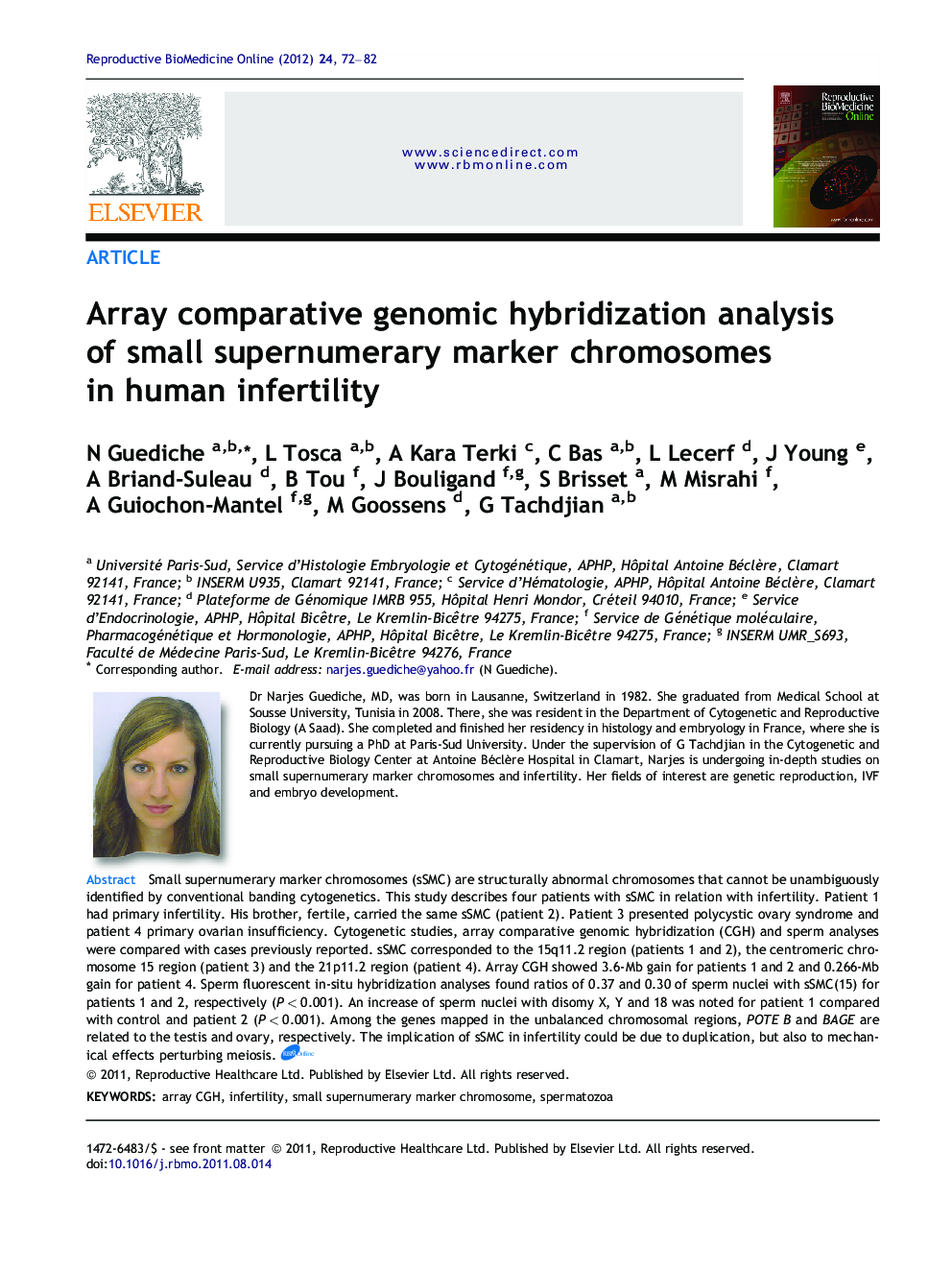| Article ID | Journal | Published Year | Pages | File Type |
|---|---|---|---|---|
| 3970625 | Reproductive BioMedicine Online | 2012 | 11 Pages |
Small supernumerary marker chromosomes (sSMC) are structurally abnormal chromosomes that cannot be unambiguously identified by conventional banding cytogenetics. This study describes four patients with sSMC in relation with infertility. Patient 1 had primary infertility. His brother, fertile, carried the same sSMC (patient 2). Patient 3 presented polycystic ovary syndrome and patient 4 primary ovarian insufficiency. Cytogenetic studies, array comparative genomic hybridization (CGH) and sperm analyses were compared with cases previously reported. sSMC corresponded to the 15q11.2 region (patients 1 and 2), the centromeric chromosome 15 region (patient 3) and the 21p11.2 region (patient 4). Array CGH showed 3.6-Mb gain for patients 1 and 2 and 0.266-Mb gain for patient 4. Sperm fluorescent in-situ hybridization analyses found ratios of 0.37 and 0.30 of sperm nuclei with sSMC(15) for patients 1 and 2, respectively (P < 0.001). An increase of sperm nuclei with disomy X, Y and 18 was noted for patient 1 compared with control and patient 2 (P < 0.001). Among the genes mapped in the unbalanced chromosomal regions, POTE B and BAGE are related to the testis and ovary, respectively. The implication of sSMC in infertility could be due to duplication, but also to mechanical effects perturbing meiosis.Small supernumerary marker chromosomes (sSMC) are structurally abnormal chromosomes that cannot be unambiguously identified by conventional banding cytogenetics. Previous reports of sSMC in relation with infertility have not studied the size, chromosomal regions and genes involved. We describe a series of four patients with sSMC in relation with infertility. Patient 1 had primary infertility. His brother, fertile, carried the same sSMC (patient 2). Patient 3 presented polycystic ovarian syndrome and patient 4 suffered from primary ovarian insufficiency. Cytogenetic studies including array comparative genomic hybridization (CGH), phenotypic findings and sperm chromosomal content were compared to cases previously reported. sSMC corresponded to the 15q11.2 chromosomal region (patients 1 and 2), the centromeric chromosome 15 region (patient 3) and the 21p11.2 chromosomal region (patient 4). Array CGH showed a 3.6-Mb gain for patients 1 and 2, and a 0.266-Mb gain for patient 4. Patient 3 presented a sSMC(15) that did not contain euchromatin. Sperm FISH analyses found respectively ratios of 0.37 and 0.30 of sperm nuclei with sSMC(15) on total counted cells for patients 1 and 2 (P < 0.001). A significant increase in the proportions of sperm nuclei with disomy X, Y and 18 was noted for patient 1 compared with control donor and patient 2 (P < 0.001). Among the genes mapped in the unbalanced chromosomal regions for the sSMC studied, the POTE B and BAGE genes were related to testis and ovary, respectively. The implication of sSMC in infertility could be due to the duplication of these genes but also to mechanical effects of the sSMC perturbing meiosis.
